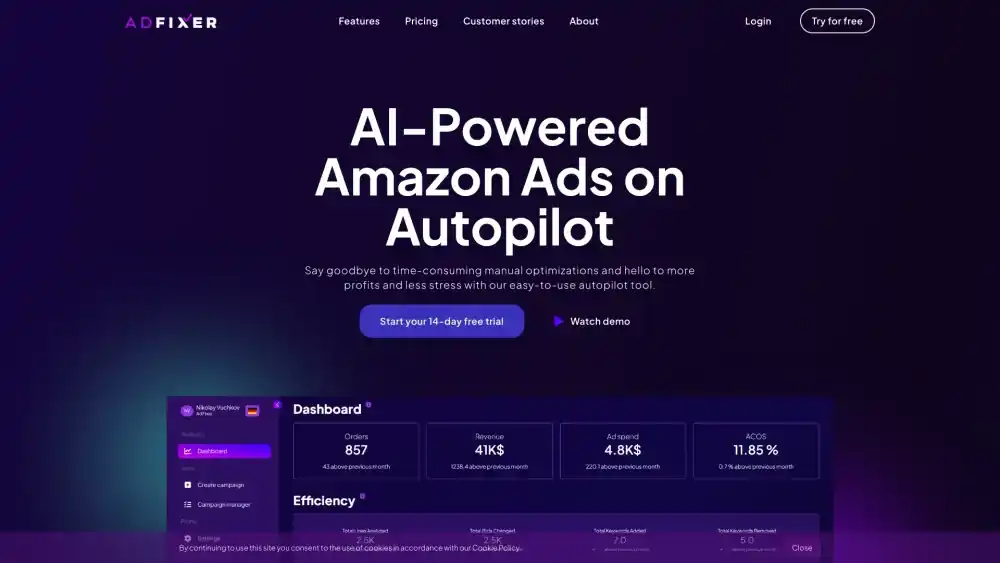Let’s Build an AI-Powered Introduction
To create a compelling AI-powered introduction, we need to consider:
- The topic or product: What is the main focus?
- Target audience: Who are you trying to reach?
- Desired tone: Formal, informal, persuasive, informative, etc.?
- Key benefits or features: What sets it apart?
Here are some general examples to get you started:
For a tech product:
- Informative: “Introducing the future of. Our AI-powered harnesses advanced technology to [benefit].”
- Persuasive: “Tired of [problem]? Meet your new solution. Our AI-powered revolutionizes [industry] by [key benefit].”
For an AI-driven service:
- Informative: “Discover the power of AI with our innovative service. We utilize cutting-edge technology to [benefit].”
- Persuasive: “Experience a new level of [benefit] with our AI-powered service. Let AI work for you.”
Would you like to provide more details about your AI-powered product or service? I can tailor the introduction accordingly.
Alternatively, you can share a specific topic or industry, and I can generate some options.
Let’s create an introduction that captures attention and effectively communicates your message!
Pros and Cons: Weighing Your Options
Pros and cons are simply the advantages and disadvantages of something. They’re often used to help make decisions.
How to Use Pros and Cons:
- Identify the decision: What are you trying to decide?
- List the pros: What are the positive aspects or benefits?
- List the cons: What are the negative aspects or drawbacks?
- Analyze and compare: Carefully weigh the pros against the cons.
- Make a decision: Based on your analysis, choose the best option.
Example:
- Decision: Should I buy a new car or keep my old one?
- Pros of buying a new car: better safety features, improved fuel efficiency, new car smell.
- Cons of buying a new car: higher monthly payments, depreciation, increased insurance costs.
- Pros of keeping old car: no monthly payments, lower insurance, already know the car.
- Cons of keeping old car: potential for repairs, outdated features, lower resale value.
Would you like to weigh the pros and cons of something? I can help you brainstorm ideas.
Just give me a topic, and we can get started!
Pricing: The Art and Science of Value Exchange
Pricing is the process of determining the value that will be exchanged for a product or service. It’s a critical aspect of business strategy, as it directly impacts revenue, profitability, and customer perception.
Key Pricing Strategies:
- Cost-Based Pricing: Setting prices based on production and distribution costs, plus a desired profit margin.
- Value-Based Pricing: Determining prices based on perceived customer value rather than cost.
- Competition-Based Pricing: Setting prices in relation to competitors’ offerings.
- Dynamic Pricing: Adjusting prices based on market conditions, demand, and other factors.
Factors Affecting Pricing:
- Product or service: Features, benefits, quality, and perceived value.
- Target market: Customer demographics, preferences, and purchasing power.
- Competition: Competitors’ prices, product offerings, and market share.
- Economic conditions: Inflation, recession, and consumer spending.
- Costs: Production, distribution, marketing, and overhead expenses.
Pricing Tactics:
- Discounts: Offering reduced prices for bulk purchases, seasonal sales, or promotions.
- Bundling: Combining multiple products or services into a package at a discounted price.
- Skimming: Setting a high initial price to capture early adopters, then gradually lowering it.
- Penetration pricing: Setting a low initial price to gain market share, then increasing it later.
Would you like to explore a specific pricing strategy or discuss a particular product or service? I can provide more tailored advice based on your specific needs.
Here are some questions to help you focus your pricing strategy:
- What is the unique value proposition of your product or service?
- Who is your target market, and what is their price sensitivity?
- What are your competitors’ pricing strategies?
- What are your cost structures?
- What are your pricing objectives (e.g., profit maximization, market share, premium positioning)?
Please feel free to share more information about your business, and I’ll be happy to assist you further.
Alternatives: Exploring Your Options
An alternative is a choice or option that can be considered instead of something else. It’s about thinking outside the box and finding different approaches to a problem or situation.
Why Alternatives Matter:
- Problem-solving: Offers different solutions to challenges.
- Innovation: Encourages creativity and new ideas.
- Decision-making: Provides more options to choose from.
- Risk management: Helps mitigate potential negative outcomes.
Types of Alternatives:
- Direct substitutes: Similar products or services that can be used in place of another.
- Complementary alternatives: Options that can be used in conjunction with the original choice.
- Creative alternatives: Innovative solutions that offer a unique approach.
Would you like to explore alternatives for a specific situation or problem? I can help you brainstorm and evaluate different options.
Please feel free to share the details, and we can work together to find the best alternative.
FAQs: Your Go-To Information Hub
FAQs, short for Frequently Asked Questions, is a collection of common questions and their answers. They’re typically used on websites, in help centers, or as part of customer support to provide quick and easy access to information.
Why are FAQs important?
- Saves time: Users can find answers quickly without contacting support.
- Improves customer satisfaction: Addresses common concerns promptly.
- Reduces support load: Fewer repetitive inquiries for support teams.
- Boosts SEO: Well-structured FAQs can improve search engine rankings.
How to create effective FAQs:
- Identify common questions: Analyze customer inquiries, social media, and support tickets.
- Write clear and concise answers: Use simple language and avoid technical jargon.
- Organize logically: Categorize questions by topic for easy navigation.
- Keep it updated: Regularly review and update FAQs as needed.
Would you like to create FAQs for a specific topic or product? I can help you brainstorm questions and write informative answers.
Or, perhaps you have a specific question in mind? Feel free to ask, and I’ll do my best to provide a helpful answer.
Let me know how I can assist you further!
Conclusion: The Final Chapter
A conclusion is the final part of something, summarizing key points and often offering a final perspective.
Key elements of a strong conclusion:
- Recapitulation: Briefly summarize the main arguments or points discussed.
- Synthesis: Combine the ideas presented into a cohesive whole.
- Final thoughts: Offer a concluding statement or perspective on the topic.
- Call to action: (Optional) Encourage the reader to take a specific action.
Example:
If you’ve written an essay about the benefits of recycling, your conclusion might:
- Recap the main points about reduced waste, energy conservation, and environmental protection.
- Combine these points to emphasize the overall positive impact of recycling.
- Offer a final thought about the importance of individual actions in creating a sustainable future.
- Encourage readers to recycle more and promote recycling in their communities.
Would you like to work on a conclusion for a specific piece of writing? I can help you brainstorm ideas and structure your final thoughts effectively.
Please feel free to share your draft, and we can work together to create a powerful conclusion.
![]()







